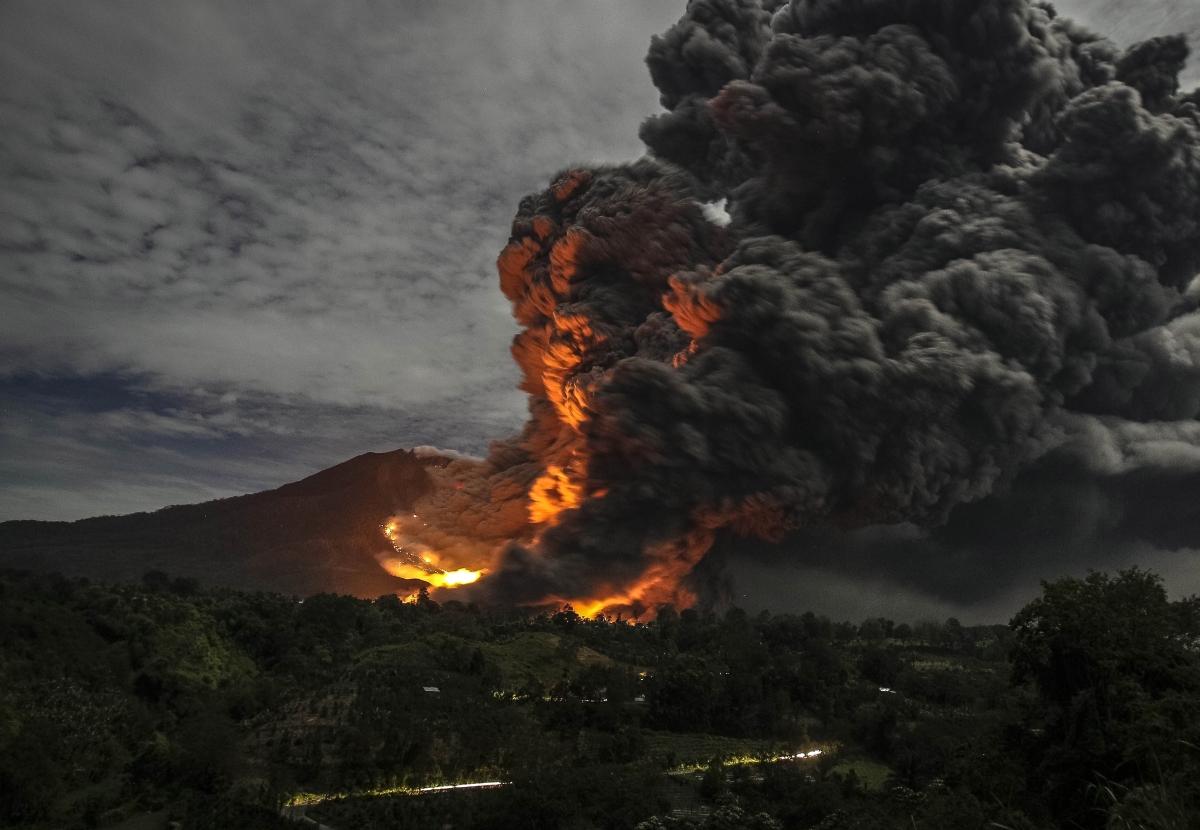The latest in a recent set of eruptions of Indonesia's Sinabung volcano occurred on Wednesday afternoon, spewing burning gas and rocks up to 10,000 feet into the sky and forcing hundreds of residents to flee.
The eruptions of Mount Sinabung, which was dormant until early September 2013, have for the last three days been intensifying, emitting pyroclastic flows and spreading volcanic ash, thereby paralysing the entire area.
Sinabung volcano erupted twice on Wednesday, once at 12:45am and then again around 12:42pm, causing pyroclastic flows as far as 3km down Sinabung's southern slope and sending volcanic ash 3km into the sky, reported the Jakarta Post.
The 8,530ft Sinabung volcano, started erupting four years ago after lying dormant for hundreds of years. Situated in Sumatra, it had last erupted in February, emitting a pyroclastic ash cloud and killing at least 15 people. The fast-moving current, which can reach speed up to 450mph usually, travels downhill.
The last eruption had forced thousands to evacuate their homes and relocate from the western island.
Thousands of people, who were evacuated from nearby homes post volcanic eruptions of Mount Sinabung in the previous years, are still living in emergency shelters and temporary homes, reported the Independent.
The Indonesian government is relocating some villages permanently because they are too close to the summit of Mount Sinabung, however, the residents are very attached to the slopes of Sinabung volcano owing to its fertile soil.
While Sinabung volcano remains spewing ash and rocks up into the sky, the seismic activity in Bardarbunga volcano of Iceland is ongoing, with about 25 earthquakes having been observed in the last 12 hours.
Copahue volcano in Central Chile-Argentina border has been emitting steam and gases while the alert level of Mayon Volcano in the Philippines is relatively low, with moderate emission of white steam plumes.
On the other hand, Japan's Ontake volcano has caused casualties in last month, with the toll surpassing 55.


















